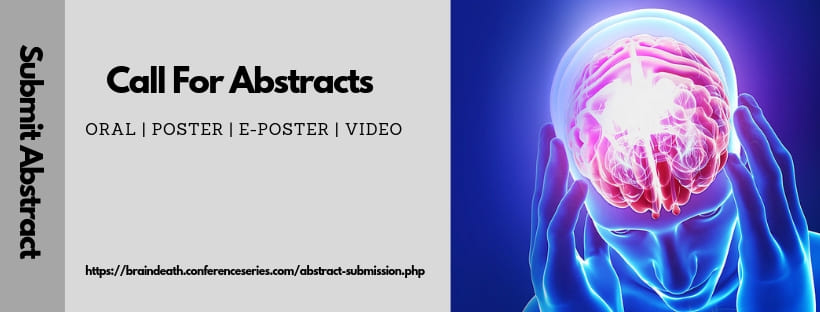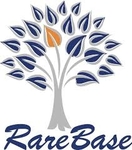Brain Death
Brain death is determined by the complete and irreversible cessation of the whole brain activity including brain stem. The loss of consciousness leads to the respiratory and cardiopulmonary failure. Therefore, brain death results in all other organs’ death.
Sub-tracks:
Cortical or Cerebral Death
Brainstem Death
Whole Brain Death
Brain Injury
An Acquired Brain Injury (ABI) is an injury to the brain that is not hereditary, congenital, degenerative, or induced by birth trauma. Essentially, this type of brain injury is one that has occurred after birth. The injury results in a change to the brain's neuronal activity, which affects the physical integrity, metabolic activity, or functional ability of nerve cells in the brain. There are two types of acquired brain injury i.e., traumatic and non-traumatic.
Sub-tracks:
Traumatic Brain Injury
Brain Hemorrhage
Scalp Injuries
Skull Fractures
Cerebral contusion and Laceration
Epidural Hematoma
Brain Death Causes
While a person got an irreversible and catastrophic brain injury that causes the total cessation of the brain function which leads to brain death. Major causes of brain death are severe traumatic injury, cerebrovascular injury like stroke, anoxia due to heart attack, brain tumor etc. Brain infections, tumors, traumatic injury are responsible for brain swelling and for that brain loses its functions. Sometimes hypertension may cause bleeding in the brain that leads to brain death.
Sub-tracks:
Stroke or Aneurysm
Anoxia
Traumatic Brain Injury
Brain Tumor
Brain Death Diagnosis
The process of brain death determination and certification includes identification of physical examination findings which give a clear etiology of brain dysfunction. The diagnosis of brain death is clinically determined primarily. If the full clinical examinations including brain stem reflexes and apnea test are conclusively performed, then no other confirmatory tests are required. In some cases like cervical injuries or cardiovascular instability may cause misinterpretation of clinical tests’ result. In such case, a confirmatory test is necessary to verify the brain death properly. These confirmatory tests include angiography, cerebral arteriography, electroencephalography, nuclear brain scanning, transcranial Doppler ultrasonography etc. All the determination process should be done by at least two specialist physicians separately and all phases of determination should be recorded. Finally certification process should be done after completion of maintaining all records.
Sub-tracks:
Clinical Evaluation
Neurological Assessments
Apnea test
Ancillary test
Angiography
Cerebral Arteriography
Brain Death and Disorders of consciousness
Brain death and disorders of consciousness such as coma, vegetative state and minimally conscious state. Coma: A state of unconsciousness from the patient who cannot be aroused even with stimulation such a pressure on the supraorbital nerve, temporo- mandibular angle of the mandible, sternum, or nail bed. Vegetative state: This signifies an awake but unresponsive state, most of these patients were earlier comatose and a period of days or weeks emerges to an unresponsive state in which their eyelids are open, giving the appearance of wakefulness. This explains two inter-related paradoxes; the first paradox is the brain dead patient whose 'phenotype' betrays the ultimate futility and lack of sustainability of the state and the second paradox is that of patients who retain apparent higher levels of cognitive function but who may be misidentified as remaining in a vegetative state or one of the similar conditions formulated in the recently defined syndrome of cognitive motor dissociation.
Sub-tracks:
Coma
Persistent Vegetative State
Locked in Syndrome
Minimally Conscious State
Cardiopulmonary Failure
Brain Tumor
A brain tumor is an abnormal growth of cells inside the brain or skull. A primary brain tumor is an abnormal growth that starts in the brain and usually does not spread to other parts of the body. Primary brain tumors may be benign or malignant. Metastatic (secondary) brain tumors begin as cancer elsewhere in the body and spread to the brain. They form when cancer cells are carried in the blood stream. The most common cancers that spread to the brain are lung and breast.
Sub-tracks:
Glioblastoma
Acoustic Neuroma
Embryonal Tumors
Craniopharyngioma
Medulloblastoma
Coma vs. Brain Death
Individual in a state of coma is considered as alive, no matter how severe or prolonged. There is a chance to get back into the normal life for the coma patients as the patient is in reversible unconscious condition but brain continuously gives electrical impulse signal to rest of the body. In case of brain death patients, they are in irreversible unconscious condition i.e. complete and irreversible cessation. In case of vegetative state coma, the patient has recovered brain stem function but not higher cognitive abilities. If the vegetative state continues for more than one month then it is considered as persistent vegetative state which normally leads to brain death. Only in rare cases, patient with persistent vegetative coma state can recover full mental awareness.
Sub-tracks:
Locked-in Syndrome
Clinical Death vs. Brain Death
Persistent Vegetative State
Brain Dysfunction
Brain Hemorrhage
Neural Tube Defect (NTD)
Pediatrics Brain Diseases
Developmental Brain Injury and Disorders (DBD) occur prior to birth or in early childhood. They may be caused by genetic factors or can be brain injuries acquired through exposure to environmental factors (such as fetal alcohol spectrum disorder, infection, physical brain injury or drug addiction in the mother). DBD commonly affect the person throughout their entire lifetime and symptoms fall on a spectrum from high-functioning children and adults, to more mildly or severely affect individuals with intellectual disability and a variety of other common symptoms. Some children born with DBD can also have defects in other organ systems as part of a syndrome.
Sub-tracks:
Anencephalic Infants
Neonatal Neurology
Brain Malformations
Birth Asphyxia
Cerebrovascular Malformations
Rehabilitation of Traumatic Brain Injury
Traumatic Brain Injury (TBI) occurs when an outside mechanical force is applied to the head and affects brain functioning. It can be caused by a blow to the head or a penetrating head injury or a rapid acceleration- deceleration event if the head has not been directly struck. Mostly common in a large group of disease causing acquired brain injuries.
Sub-tracks:
Closed Brain Injury
Open Brain Injury
Clinical Evaluation of Brain Death
Clinical Evaluation of Brain Death is divided into two main categories they are Prerequisites and Neurologic Assessment. Prerequisites: Brain death is the absence of clinical brain function when the proximate cause is known demonstrably irreversible. Clinical or neuroimaging evidence of an acute catastrophe that is compatible with the clinical diagnosis of brain death. No drug intoxication or poisoning. Neurologic Assessment: Coma, Absence of brainstem reflexes and apnea test.
Sub-tracks:
Caloric Testing
Pupils
Ocular Movement
Facial sensation and facial motor response
Pharyngeal and Tracheal Reflexes
Nursing and Intensive Care practices
Caring of brain death diagnosed patient is the heaviest of duties for nurses. Due to stressors and complications, this is the biggest challenge of nursing in critical care unit. Nurses working in ICU must be knowledgeable about the brain death diagnosis and taking care of patients and their family especially when the patient is potential organ donor.
Sub-tracks:
Neurological Nursing
ICU management of the brain dead potential donor
Organ Donation and Complications
For the advancement in modern science and technology, organ donation is the greatest achievement by which an organ failure patient may get new life. Organ donors are of two types as living related donor and living non-related donor like brain death patient and cadaveric donor. After brain death, donated organs are kept viable by using ventilator or other supporting mechanisms until it will be transplanted. In case of brain death, patient can donate most of the organs. Critical care management of a potential donor patient is very crucial to maximize the number and the quality of the transplanted organs.
Sub-tracks:
Living Donor
Cadaveric Donor
Organ Collection & Preservation
Miscellaneous Neurological Disorders
Sub-tracks:
Head Trauma
Neurocardiogenic Syncope
Biomarkers in Neurology
Oculo-Vestibular, Corneal and Oculocephalic Reflex
Seizures
Intracerebral Haemorrhage








